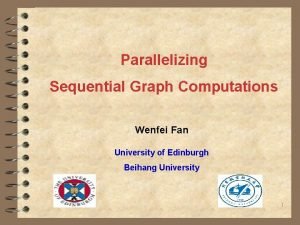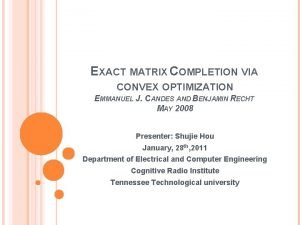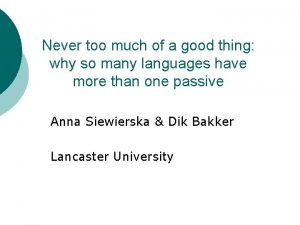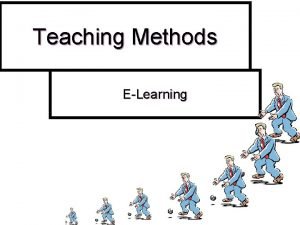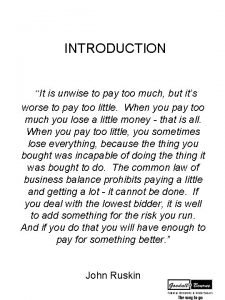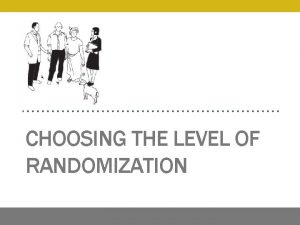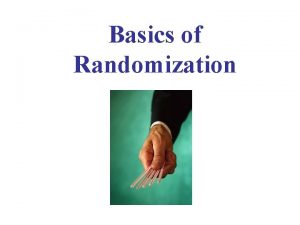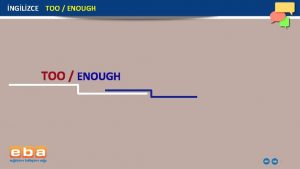Optimization via too much Randomization Why parallelizing like
































- Slides: 32

Optimization via (too much? ) Randomization Why parallelizing like crazy and being lazy can be good Peter Richtarik

Optimization as Mountain Climbing

Optimization with Big Data = Extreme* Mountain Climbing * in a billion dimensional space on a foggy day

Big Data BIG Volume BIG Velocity BIG Variety digital images & videos transaction records government records health records defence internet activity (social media, wikipedia, . . . ) • scientific measurements (physics, climate models, . . . ) • • •

God’s Algorithm = Teleportation

If You Are Not a God. . . x 0 x 2 x 3 x 1

Randomized Parallel Coordinate Descent holy grail settle for this start

Arup (Truss Topology Design) Western General Hospital (Creutzfeldt-Jakob Disease) Royal Observatory (Optimal Planet Growth) Ministry of Defence dstl lab (Algorithms for Data Simplicity)

Optimization as Lock Breaking

A Lock with 4 Dials A function representing the “quality” of a combination x = (x 1, x 2, x 3, x 4) F(x) = F(x 1, x 2, x 3, x 4) Setup: Combination maximizing F opens the lock Optimization Problem: Find combination maximizing F

Optimization Algorithm

A System of Billion Locks with Shared Dials 1) Nodes in the graph correspond to dials Lock x 1 x 4 x 3 x 2 xn 2) Nodes in the graph also correspond to locks: each lock (=node) owns dials connected to it in the graph by an edge # dials = n = # locks

How do we Measure the Quality of a Combination? • Each lock j has its own quality function Fj depending on the dials it owns • However, it does NOT open when Fj is maximized • The system of locks opens when F = F 1 + F 2 +. . . + Fn is maximized F : Rn R

An Algorithm with (too much? ) Randomization 1) Randomly select a lock 2) Randomly select a dial belonging to the lock 3) Adjust the value on the selected dial based only on the info corresponding to the selected lock

Synchronous Parallelization Processor 1 Processor 2 Processor 3 J 1 IDLE J 7 time IDLE E T S A W J 4 J 2 J 5 J 8 IDLE L FU J 3 IDLE J 6 J 9 IDLE

Crazy (Lock-Free) Parallelization Processor 1 Processor 2 Processor 3 J 1 J 4 J 3 W O N time J 2 J 5 J 7 J 8 E T S A J 6 J 9

Crazy Parallelization

Crazy Parallelization

Crazy Parallelization

Crazy Parallelization

Theoretical Result # Processors Average # of dials common between 2 locks # Locks Average # dials in a lock

Computational Insights





Theory vs Reality

Why parallelizing like crazy and being lazy can be good? Parallelization Randomization • • Effectivity Tractability Efficiency Scalability (big data) Parallelism Distribution Asynchronicity

Optimization Methods for Big Data • Randomized Coordinate Descent – P. R. and M. Takac: Parallel coordinate descent methods for big data optimization, Ar. Xiv: 1212. 0873 [can solve a problem with 1 billion variables in 2 hours using 24 processors] • Stochastic (Sub) Gradient Descent – P. R. and M. Takac: Randomized lock-free methods for minimizing partially separable convex functions [can be applied to optimize an unknown function] • Both of the above M. Takac, A. Bijral, P. R. and N. Srebro: Mini-batch primal and dual methods for support vector machines, Ar. Xiv: 1303. xxxx

Final 2 Slides

Probability HPC Matrix Theory Tools Machine Learning

 Kahoot quantifiers
Kahoot quantifiers Incrementalizing graph algorithms
Incrementalizing graph algorithms Högkonjuktur inflation
Högkonjuktur inflation How much
How much How much is too much plagiarism
How much is too much plagiarism I feel like i care too much
I feel like i care too much Andreas carlsson bye bye bye
Andreas carlsson bye bye bye Too broad and too narrow examples
Too broad and too narrow examples Too broad too narrow
Too broad too narrow Too broad and too narrow examples
Too broad and too narrow examples Too broad and too narrow examples
Too broad and too narrow examples Just about right scale
Just about right scale Here you are too foreign for home
Here you are too foreign for home Too anointed to be disappointed meaning
Too anointed to be disappointed meaning Exact matrix completion via convex optimization
Exact matrix completion via convex optimization The world is too much with us imagery
The world is too much with us imagery The world is too much with us
The world is too much with us Analysis of the world is too much with us
Analysis of the world is too much with us Megan and ron ate too much and felt sick.
Megan and ron ate too much and felt sick. Security is always too much until the day it is not enough
Security is always too much until the day it is not enough Too much vertical angulation results in images that are
Too much vertical angulation results in images that are Deacon process reaction
Deacon process reaction Good pilgrim you do wrong
Good pilgrim you do wrong Never too much of a good thing
Never too much of a good thing Cause and effect essay conclusion
Cause and effect essay conclusion Where does nitrogen come from
Where does nitrogen come from Too much compassion
Too much compassion Merits of problem solving method
Merits of problem solving method What is literary present
What is literary present It is unwise to pay too much
It is unwise to pay too much Too much gravity
Too much gravity How food travels through the digestive system
How food travels through the digestive system If i profane with my unworthiest hand
If i profane with my unworthiest hand

